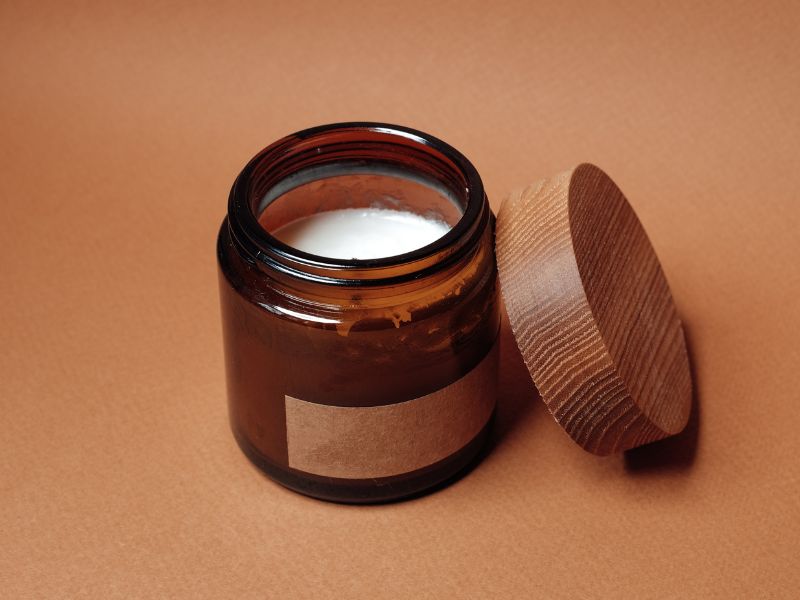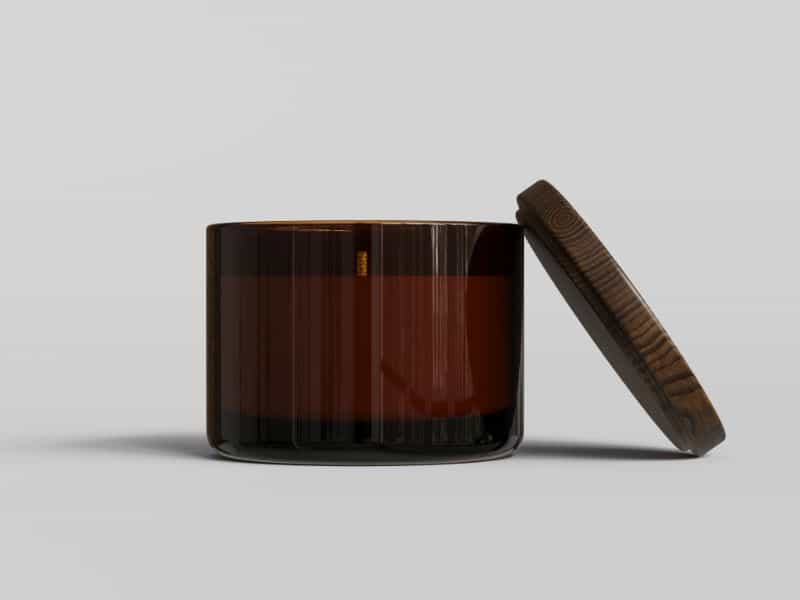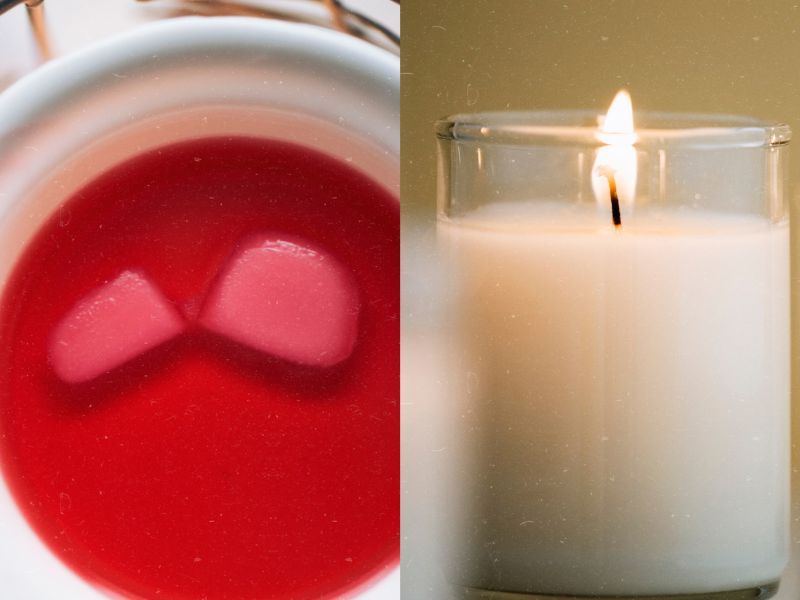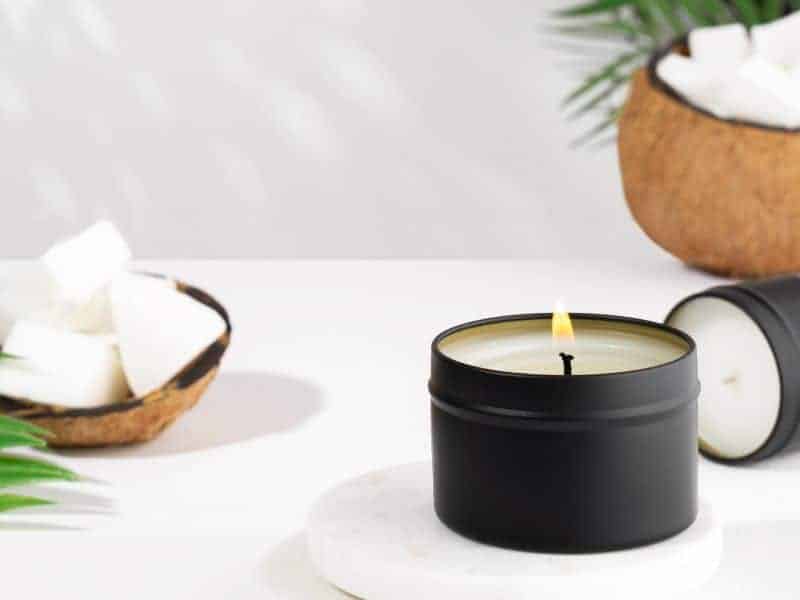Are you looking to make your own candles but don’t know the right way to do it? Look no further! This blog post will answer all of your questions about curing candles and provide tips for making sure that they turn out just as expected. Are you trying to figure out if you should cure your candles with the lid on or off? In this article, we will explain that and more.
Candles should be cured with the lids on. Curing candles with the lids on can help trap fragrance oils inside the container, prevent dust and debris from settling on the surface, and keep the candle in a more stable environment during the curing process.
However, it is important to make sure that the candle wax has completely hardened and the wax has cooled before adding the lid to the candle. I suggested adding the lids to the candles just before you pack them away while you wait for them to cure.
Curing is an essential process in candle making that allows the wax to fully cool and the fragrance to properly disperse. Properly cured candles are more visually appealing, have a stronger scent throw, and burn evenly. Curing also helps to prevent problems such as frosting, cracking, and tunneling.
Candle Curing And The Importance Of Lids
One of the main reasons why it is important to have lids on candles while they are curing is to prevent dust and debris from settling on the surface of the wax. This can be particularly important if you are curing your candles in an area that is not completely dust-free. The presence of dust and debris can negatively affect the appearance of the candle and can cause issues when it is burned.
Another important reason to have lids on candles while they are curing is to prevent the fragrance oils from evaporating or dissipating before they have had a chance to properly disperse throughout the wax. Curing candles with the lids on can help trap the fragrance oils inside the container, allowing them to fully infuse into the wax and create a stronger scent throw.
Additionally, curing candles with the lids on can help keep them in a more stable environment during the curing process. This can be particularly important if you are curing your candles in an area that experiences temperature and humidity fluctuations. Curing candles in a stable environment can help prevent problems such as sweating or frosting on the surface of the wax.
Should You Cure Candles with the Lids On or Off?
Curing candles is an essential process in candle making that allows the wax to fully cool and the fragrance to properly disperse. However, there is some debate about whether candles should be cured with the lids on or off. I believe the pros outweigh the cons in this debate but here are the facts for you to decide for yourself.
Here are some of the pros and cons of each method, as well as some factors that may influence your decision.
Pros and cons of curing candles with the lids on
Pros:
- Helps trap fragrance oils inside the container, leading to a stronger scent throw
- Prevents dust and debris from settling on the surface of the wax
- Creates a more stable environment during the curing process
Cons:
- May trap excess moisture inside the container, leading to sweating or frosting on the surface of the wax
- This may cause the fragrance oils to evaporate or dissipate before they have a chance to properly infuse into the wax
Pros and cons of curing candles with the lids off
- Allows excess moisture to escape, reducing the risk of sweating or frosting on the surface of the wax
- May create a stronger scent throw as the fragrance oils are not trapped inside the container
- Allows for easier monitoring of the curing process
Cons:
- May allow dust and debris to settle on the surface of the wax
- This may expose the candles to temperature and humidity fluctuations that can negatively impact the curing process
Factors that may influence whether to cure candles with the lids on or off
- The type of wax and fragrance oils used
- The curing environment (e.g. how dust-free it is, how stable the temperature and humidity are)
- Personal preference and experience with each method
Factors to Consider When Deciding to Cure Candles with the Lids On or Off
Here are a few things you might want to consider when deciding to cure your candles with the lids on or off.
Type of wax used
The type of wax used can affect whether to cure candles with the lids on or off. Soy wax, for example, is known to produce a frosting effect when it cools quickly. This frosting effect can be minimized by curing the candles with the lids on, which allows for a slower and more even cooling process.
Type of fragrance or essential oil used
The type and amount of fragrance or essential oil used can also influence whether to cure candles with the lids on or off. Some scents can be more volatile and may evaporate quickly, which can lead to a weaker scent throw. Curing candles with the lids on can help to retain the fragrance and improve the scent throw.
Temperature and humidity conditions during curing
The temperature and humidity conditions during the curing process can also play a role in whether to cure candles with the lids on or off. In hot and humid conditions, curing candles with the lids off may cause excess moisture to accumulate on the candles, leading to issues with frosting or sweating. On the other hand, in dry or cold conditions, curing candles with the lids on may cause excess moisture to be trapped inside the jars, leading to issues with wet spots or uneven surfaces.
Personal preference and experience
Ultimately, the decision to cure candles with the lids on or off can come down to personal preference and experience. Some candle makers may find that curing with the lids on produces better results, while others may prefer curing with the lids off. It may be helpful to experiment with both methods and see which works best for your specific candle-making process.
The Dos and Don’ts of Candle Curing
Here are some important things you should know about the dos and don’ts of candle curing.
The Dos of Candle Curing
- Allow candles to cure for at least 48 hours before burning them.
- Keep candles in a cool, dry place away from direct sunlight.
- Cover candles with a lid or wrap them in plastic to prevent dust and debris from settling on the surface.
- Use a thermometer to ensure that the temperature of the curing room remains consistent, ideally between 60-80°F.
- Store cured candles in a dark, cool location to maintain their fragrance and color.
The Don’ts of Candle Curing
- Do not burn candles before they have had time to cure properly.
- Avoid exposing candles to extreme temperatures or humidity during the curing process.
- Do not handle or move candles until they have fully cured to prevent misshaping or cracking.
- Do not stack or compress candles during the curing process as this can damage their texture and shape.
- Avoid using fragrances or oils that are not specifically designed for candle-making, as this can affect the quality of the finished product.
Candle Curing Tips for Beginners
For beginner candle makers, here are some tips to keep in mind when curing candles:
Allow time for the wax to cool and harden before removing the wick tabs.
Be sure to use a thermometer to check that the temperature of the curing room is within an ideal range (60-80°F).
Cover candles with lids or wrap them in plastic to keep out dust and debris.
Store finished candles in a cool, dry place away from direct sunlight.
Give the candles at least 48 hours before burning them to ensure an even burn.
Try experimenting with different methods of curing, such as lids on vs lids off, to see which works best for your specific candle-making process.
Frequently Asked Questions
If you don’t cure your candles, the wax may not fully harden and could be soft or wet. This can lead to issues with burning, such as an uneven burn or weak scent throw.
It’s best to put the lid on a candle after it has had time to cool and harden, usually around 48 hours. This will help to retain the fragrance of the candle and improve its scent throw. Additionally, it can help to keep dust and debris from settling on the surface of the candle.
No, it’s not recommended to cure candles in the freezer. Freezing temperatures can cause issues with candle shape and texture, as well as weaken the scent throw. It’s best to keep candles in a cool, dry place away from direct sunlight during the curing process.
It usually takes at least 48 hours to a week for a candle to fully cure. It’s best to allow the wax to cool and harden before removing the wick tabs, and to give the candle at least 48 hours before burning it.
Conclusion
In conclusion, curing candles is an important part of the candle-making process, and we recommend that you cure them with the lids on. Understanding the dos and don’ts of candle curing can help ensure a successful end result. By allowing time for the wax to cool and harden before removing the wick tabs, keeping candles in a cool dry place, covering them with lids or wrapping them in plastic, and storing them in a dark, cool location, your candles will be sure to come out looking and smelling great! Additionally, it’s best to give the candles at least 48 hours before burning them. With some patience and care, you can have beautiful homemade candles that you can be proud of!






